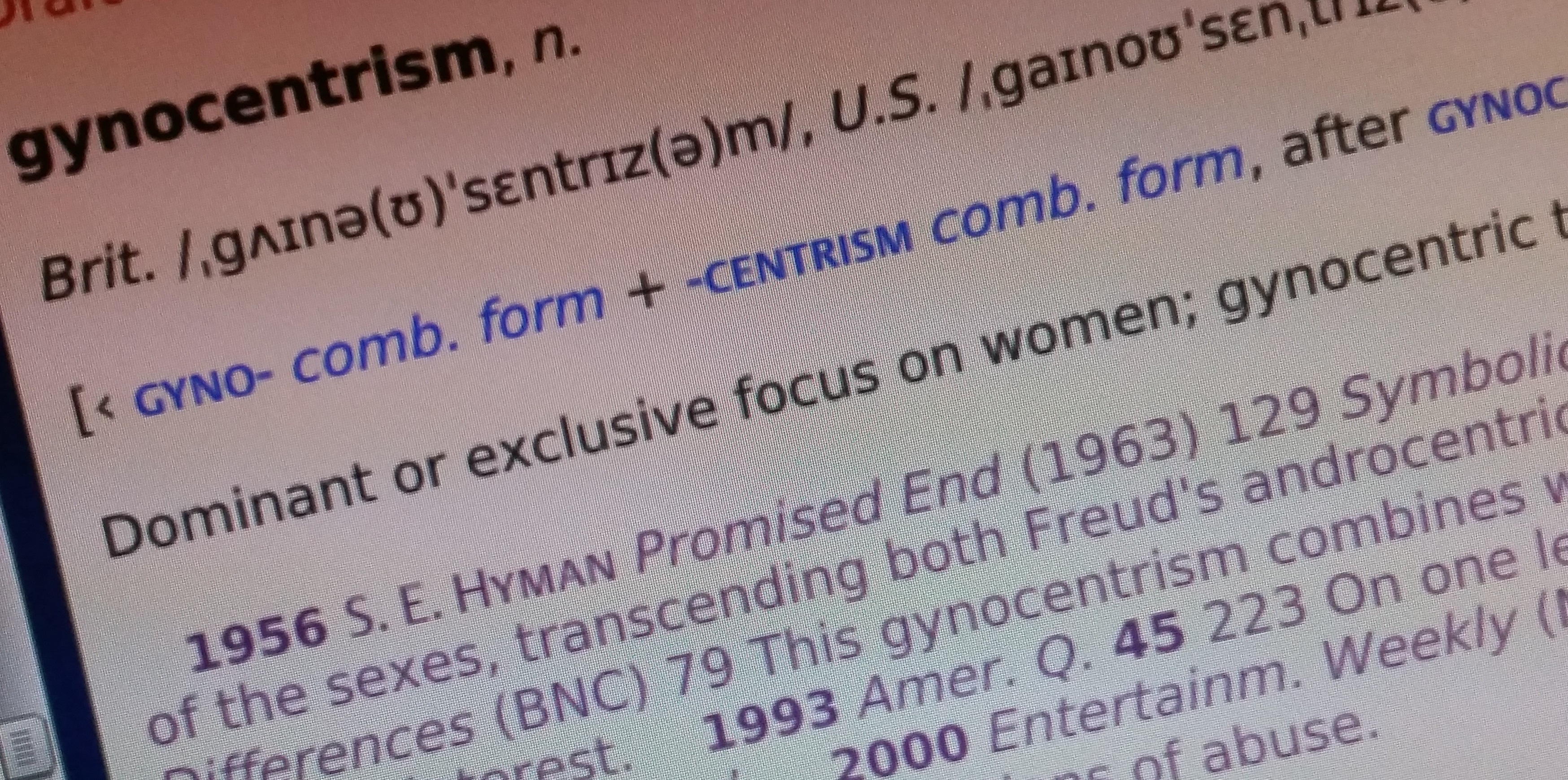
There sometimes occurs conflicting definitions of gynocentrism, so it might help to clarify and understand a central facet of the word: the suffix “-centrism.”
We can legitimately name a single, isolated act “gyno-centric”; e.g., when we celebrate Mother’s Day. Or for a more dramatic illustration, if a man were to take on a knife-wielding maniac who is threatening to hurt his pregnant wife, while the wife retreats and does not help the husband during the fight, then the actions of both husband (protecting his wife) and wife (protecting herself) are rightly defined as “gyno-centric”.
If we consider the overall relationship between the same husband and wife, as a whole, we might ask a new question – is the relationship a gyno-centric one? If the husband and wife take turns indulging each other across the duration of their relationship, then the relationship is rightly referred to as “couple centered” — because by definition a gyno-centric relationship centers exclusively around the woman. As soon as you have genuine reciprocity in a relationship, ie. a couple-centric dynamic, it can no longer be considered gynocentric.
Employing the word gynocentrism to discuss reciprocal exchanges between men and women, where women are occasional beneficiaries in certain ways, and men are beneficiaries in certain ways, is an erroneous use of the term because such exchanges, strictly speaking, do not constitute a gender “centrism” – ie. its not a gyno-centric relationship.